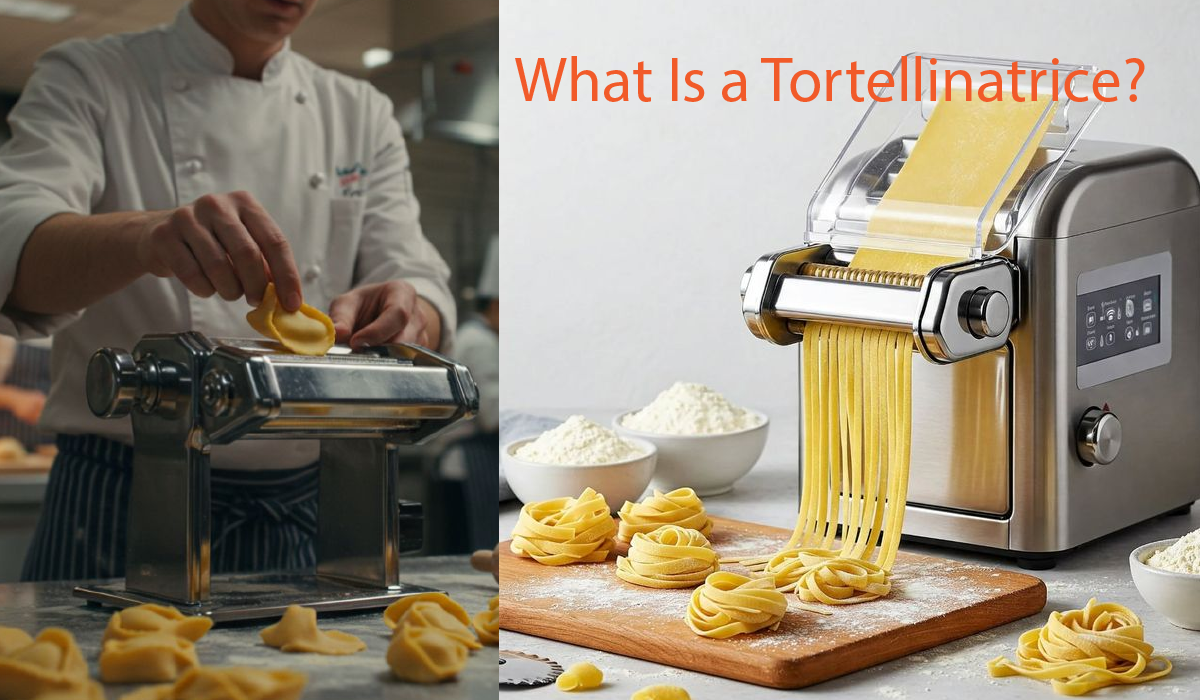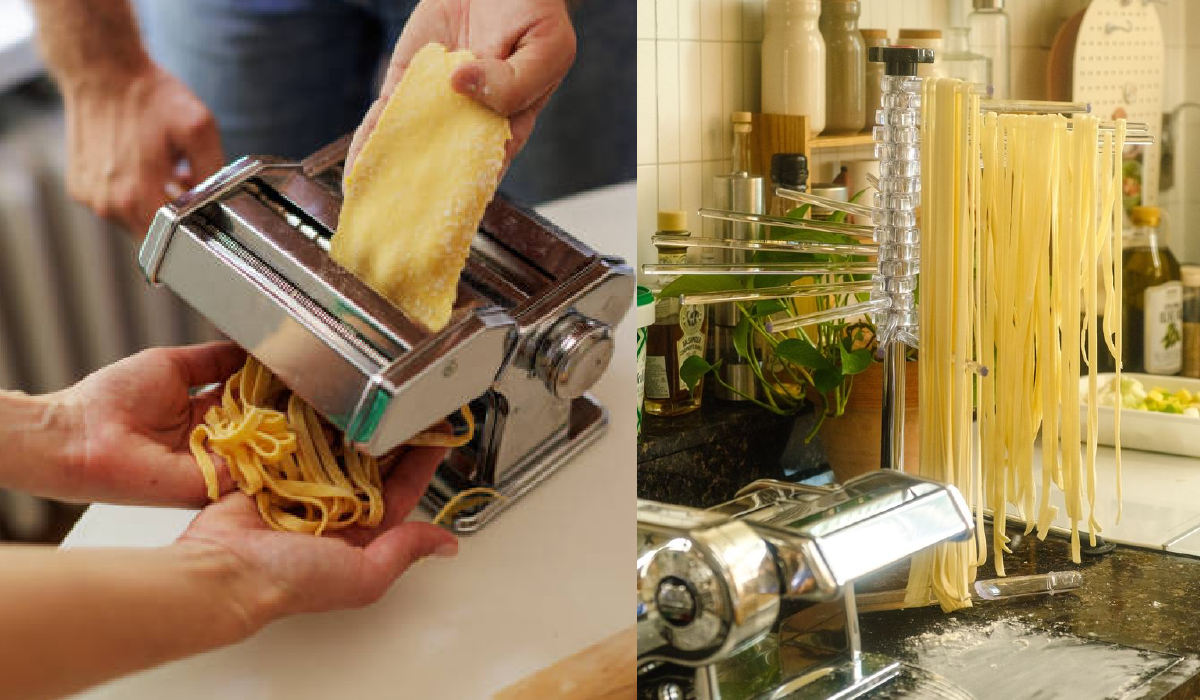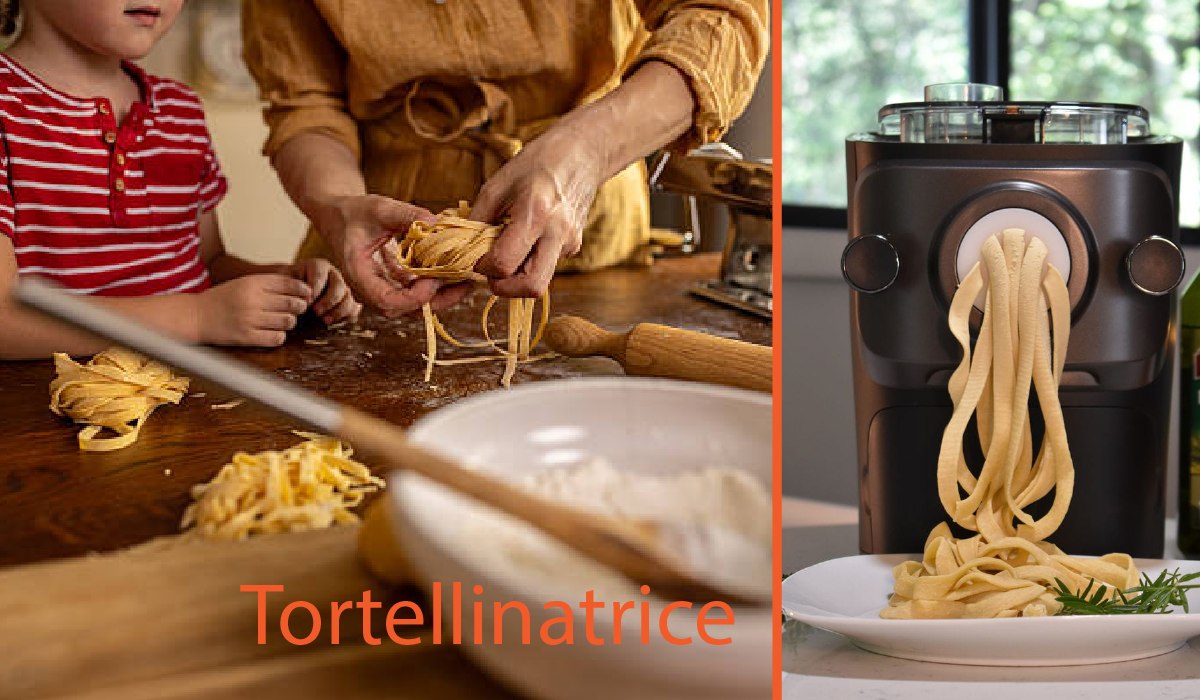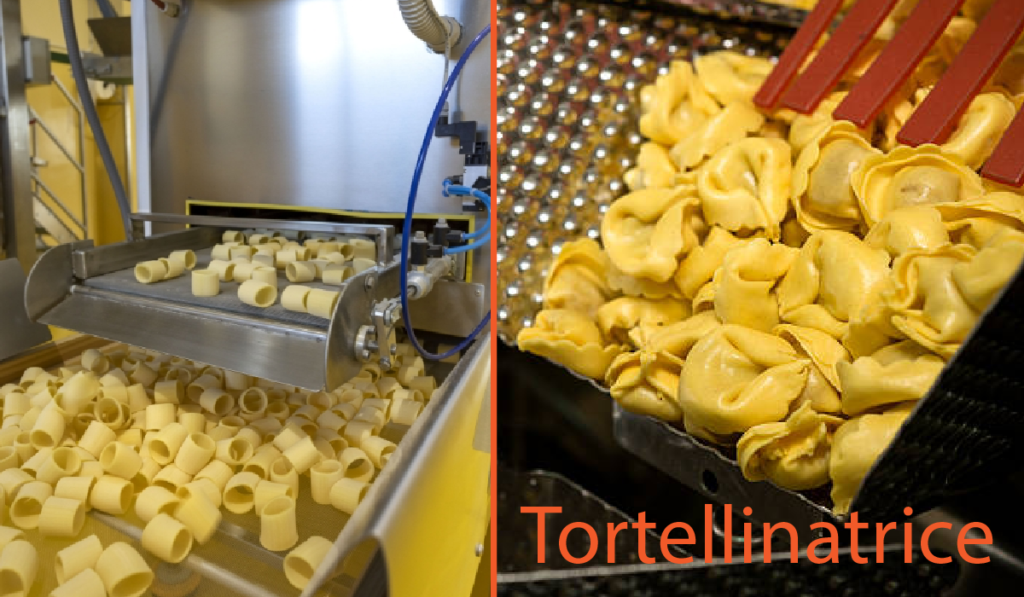The “Tortellinatrice” is more than just a piece of kitchen equipment—it is the culmination of Italy’s rich culinary history, wrapped in the technological advancements of the modern era. For centuries, the art of making tortellini has been a symbol of craftsmanship, culture, and family tradition in regions like Emilia-Romagna, where pasta isn’t merely food but a ritual passed down through generations. Handmade tortellini requires hours of labor: kneading the dough, rolling it out to the perfect thickness, carefully portioning the filling, folding each delicate piece, and sealing it tightly to prevent leaks during boiling.
This process, while revered, is both time-consuming and physically demanding. The Tortellinatrice transforms this labor of love into an efficient, repeatable task, maintaining the integrity of tradition while delivering consistent results at scale. Whether for a passionate home chef, a boutique trattoria, or a bustling restaurant kitchen, the Tortellinatrice is the perfect marriage of soul and science in the world of pasta making.
What Is a Tortellinatrice?
A Tortellinatrice is a specialized pasta-making machine that automates the process of crafting tortellini—from rolling out the dough to portioning the filling, folding, sealing, and cutting. The name itself is derived from the Italian word “tortellini” combined with the feminine suffix “-atrice,” denoting a machine or device designed for a specific function.
Unlike generic pasta rollers or ravioli cutters, the Tortellinatrice is purpose-built for the intricate geometry and structure of tortellini: the iconic ring-like shape that encapsulates fillings while maintaining a seal tight enough to withstand boiling without breaking. Available in various models, from manual to semi-automatic to fully automated systems, these machines serve a wide range of users, from home-based enthusiasts to large-scale food producers.

The essential distinction of a Tortellinatrice lies in its precision: it’s not merely a pasta shaper, but a system that ensures each piece is filled, formed, and sealed with uniform quality and speed—turning a laborious artisan task into a smooth and replicable workflow.
How Does a Tortellinatrice Work?
The operation of a Tortellinatrice is a step-by-step process designed for maximum control and output. It begins with the dough sheeting mechanism, where a prepared batch of pasta dough is inserted into calibrated rollers that thin it down to the desired thickness. This precision rolling step is crucial: dough that’s too thick will overpower the filling, while dough that’s too thin may tear during folding or cooking.
Once the pasta sheet is correctly formed, the filling unit deposits evenly portioned dollops—meat, cheese, pumpkin, or truffle blends—across the surface. Then, the machine folds the dough over the fillings, and with pressure-calibrated molds, seals each pocket in the characteristic tortellini shape.
Specialized cutters then separate each piece with clean edges and consistent size, ready to be transferred to trays for drying, chilling, or immediate cooking. High-end models often allow customization of parameters like dough thickness, filling density, and tortellini size, providing unmatched control for professionals. This multi-stage approach ensures that even in high-volume settings, each tortellino retains the hallmark quality of handcraftsmanship.
Types of Tortellinatrice Machines
Tortellinatrice machines come in different configurations to meet diverse culinary needs. Manual models are ideal for home cooks or small-batch producers who want hands-on control without the labor intensity of complete manual folding. These typically include a crank mechanism, basic roller, and simple shaping guide.
Semi-automatic machines are a popular choice for boutique restaurants and culinary schools—they allow for manual intervention when needed, while automating repetitive steps like filling and sealing. Fully automatic and industrial units are engineered for large-scale pasta production, offering programmable settings, higher throughput, interchangeable molds, and features such as continuous feed and integration with conveyor systems.

Then there are hybrid models tailored for different user levels: from compact, counter-friendly versions that fit in residential kitchens to floor-standing stainless-steel giants that can produce hundreds of kilos per day. Choosing the right model depends on production volume, kitchen space, staff capability, and the variety of pasta intended for production beyond tortellini, such as cappelletti or ravioli.
Benefits of Using a Tortellinatrice
The benefits of incorporating a Tortellinatrice into any kitchen—whether domestic or professional—are extensive and measurable. First and foremost is time efficiency. What might take several hours by hand can be completed in mere minutes using a Tortellinatrice, without compromising on quality or authenticity.
This is especially valuable during service rushes in restaurants or when catering large events. Consistency is another key advantage; the machine ensures each piece is identical in size and filling quantity, leading to even cooking and a uniform presentation that enhances customer satisfaction. Furthermore, it reduces manual labor, allowing chefs and staff to focus on high-value tasks like sauce making, garnishing, and plating, rather than repetitive folding.

From a cost perspective, reduced waste—thanks to precise filling and cutting—translates into savings over time. Finally, the machine fosters culinary creativity: by providing a reliable foundation, chefs can experiment with new fillings, shapes, or seasonal variations without worrying about manual execution constraints. The Tortellinatrice is not a shortcut—it’s a smart investment that elevates the entire pasta-making process.
Who Uses a Tortellinatrice?
The Tortellinatrice serves a broad user base that spans from curious culinary hobbyists to elite commercial kitchens. In domestic settings, home chefs who cherish the quality of fresh pasta but lack the time or dexterity to fold dozens of tortellini by hand use compact Tortellinatrice models to transform weekend dinners into gourmet experiences.
In trattorias and fine-dining restaurants, chefs depend on the machine to maintain high-volume production without sacrificing presentation or taste. Culinary schools adopt Tortellinatrici not only to introduce students to pasta fundamentals but also to teach them about modern kitchen automation. In the artisanal food production sector, these machines help small-scale pasta brands deliver handcrafted quality at scalable outputs, supporting business growth.
And in the realm of commercial manufacturing, industrial Tortellinatrici are indispensable, producing thousands of units per hour with precise sealing and shape retention—enabling frozen pasta lines, meal kits, and restaurant chains to maintain high standards across distribution.
More From Info: Dandork 63 Exposed: The Powerful Identity Transforming Digital Culture
Choosing the Right Tortellinatrice – Buyer’s Guide
Selecting the ideal Tortellinatrice requires an understanding of your specific use case, expected output, and kitchen logistics. First, assess your production volume: Are you producing 50 tortellini per meal, or 5,000 per day? This determines whether you need a manual, semi-automatic, or fully automatic model.
Second, examine machine features: look for adjustable thickness settings, variable fill nozzles, and mold compatibility for shape variations. Third, consider the material and hygiene factors—opt for food-grade stainless steel for durability and easy cleaning. Some machines come with dishwasher-safe parts, while others allow tool-free disassembly for fast sanitation.
Pay close attention to support and parts availability—choose a brand that offers solid warranties, customer service, and access to replacement parts like blades, belts, and filling valves. Lastly, evaluate the machine’s footprint and noise levels—especially in open kitchens or small spaces. A Tortellinatrice should fit naturally into your workflow, not disrupt it.
Cleaning and Maintenance Tips
To keep your Tortellinatrice running smoothly and hygienically, daily cleaning is essential. Start by removing any remaining dough or filling material, especially from rollers, molds, and sealing channels. Use mild soap and hot water for general cleaning, and avoid abrasive pads that can damage non-stick or polished surfaces. Most high-end models have removable parts designed for dishwashers or simple hand rinsing.
A weekly inspection of seals, nozzles, and rotating components helps prevent wear and tear, ensuring precision in portioning and shaping. If your machine uses lubrication on mechanical joints, be sure to apply food-grade lubricant as per manufacturer guidelines. Proper storage practices, like covering the unit with a dust-proof cloth and keeping it in a dry, cool place, also help extend its lifespan.
Skipping regular cleaning can result in dough hardening inside key components, leading to malfunction or contamination. Just like with any professional tool, maintenance is a commitment that pays off in longevity and performance.
Limitations and Considerations
While the Tortellinatrice is a powerful addition to any pasta-making arsenal, it’s important to consider its limitations. First is the initial cost—a high-quality machine can represent a significant investment, particularly for small operations or home cooks.
Next, space requirements—some models have a large footprint and may not be ideal for compact kitchens. There’s also a learning curve—dialing in dough consistency, filling ratios, and pressure settings may take a few trial runs. Lastly, not all fillings are compatible with every machine—wet or chunky mixes can clog valves or fail to seal correctly.
Understanding these factors helps set realistic expectations and guides users toward maximizing their investment. These challenges don’t negate the benefits but rather highlight the importance of choosing the right machine and using it correctly.
Conclusion
The Tortellinatrice stands as a shining example of how technology can enhance culinary tradition without diminishing its soul. It brings to life the artistry of tortellini with the precision and reliability of modern engineering. By streamlining the painstaking steps of rolling, filling, folding, and sealing, it makes fresh, artisanal pasta more accessible—whether you’re a home cook pursuing perfection or a chef managing high-demand service. Its ability to produce consistently beautiful, delicious tortellini elevates both everyday meals and restaurant menus.
For anyone serious about Italian cooking, investing in a Tortellinatrice is not just about convenience—it’s about honoring tradition, improving efficiency, and inspiring innovation. With proper care, attention, and a spirit of creativity, this machine transforms every plate of pasta into a story of heritage, precision, and love. In today’s fast-paced culinary world, the Tortellinatrice proves that efficiency and authenticity can exist on the same plate.
FAQs
1. What is a Tortellinatrice and how is it different from a regular pasta machine?
A Tortellinatrice is a specialized pasta-making machine designed specifically to create tortellini. Unlike a standard pasta roller or ravioli press, it automates multiple steps—rolling the dough, adding the filling, folding the pasta, sealing, and cutting—ensuring perfect tortellini every time. While regular pasta machines only roll dough or shape generic pasta, a Tortellinatrice is tailored to the precise structure, seal, and portioning required for stuffed, ring-shaped tortellini.
2. Can I use a Tortellinatrice at home or is it just for restaurants?
Yes, there are compact Tortellinatrice models designed specifically for home use. These units are smaller, easier to clean, and often manual or semi-automatic. While professional kitchens use heavy-duty automatic machines for large batches, home cooks can enjoy the same precision and consistency with user-friendly models perfect for Sunday dinners or special occasions.
3. What kind of fillings can a Tortellinatrice handle?
Most Tortellinatrice machines work well with smooth, pipeable fillings like ricotta, spinach, ground meats, pumpkin purée, or fine mushroom mixtures. Advanced models allow for adjustable portioning and pressure settings, which means even delicate or gourmet fillings like lobster or truffle blends can be used successfully. However, overly chunky or watery fillings should be avoided to prevent leaks or clogging.
4. How do I clean and maintain a Tortellinatrice?
To clean a Tortellinatrice, remove any leftover dough or filling immediately after use. Most machines have detachable parts that can be washed by hand or in the dishwasher (check manufacturer guidance). Daily cleaning is crucial to avoid buildup, while weekly inspections help ensure long-term performance. Lubricate mechanical parts as needed with food-grade oil, and always store the machine in a clean, dry area to extend its lifespan.
5. Is investing in a Tortellinatrice worth it for small food businesses or startups?
Absolutely. For small pasta shops, food startups, or catering businesses, a Tortellinatrice significantly boosts efficiency, consistency, and product quality. It reduces labor costs, cuts down on production time, and delivers uniform tortellini that meet high presentation and taste standards. Plus, the ability to scale output without sacrificing authenticity makes it a smart investment for growth-minded culinary entrepreneurs.


